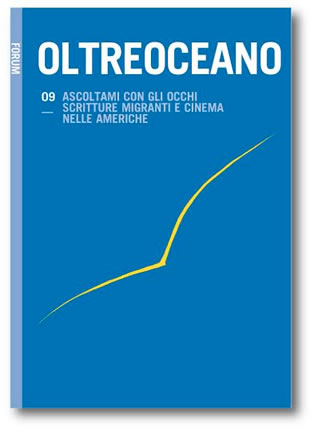De inmigrantes a burgueses. Una doble mirada sobre la decadencia
Keywords:
inmigración, burguesía, decadencia, relato, cineAbstract
A mediados del siglo XX, cuando el cultivo y la ganadería exige cuidado específico, la burguesía ociosa, descendiente de aquellos inmigrantes que, a mediados del siglo XIX se instalaron en zonas inhóspitas de Argentina multiplicando la propiedad de tierra y rentas, entra en una pendiente signada por gestos de decadencia. La literatura y el cine los han recogido. Como escritora, Beatriz Guido supo abordarlas desde una mirada descentrada y certera y, como guionista, las ha adaptado para las versiones cinematográficas que dirigiera Leopoldo Torre Nilsson. Tal es el caso de “La mano en la trampa”, “Piel de verano”, “La terraza”, “La caída”, “Piedra libre”, entre otras. Este artículo propone considerar una selección de escenas pertinentes en ambas expresiones – literaria y cinematográfica – y analizar coincidencias y diferencias de los respectivos recursos formales.
From Immigrants to Bourgeois. A Dual View on Decadence
Some immigrants who arrived around the mid-19th century settled down in promising and inhospitable areas of Argentina. The descendants of these pioneers made up a bourgeoisie that shows signs of decadence. Literature and films have gathered them. Beatriz Guido clearsightedly portrays them in her narrations and adaptations for Torre Nilsson’s film versions. This work analyses “Piedra libre”’s respective formal resources under this dual view on argentine society.
Da immigranti a borghesi. Un doppio sguardo sulla decadenza
Beatriz Guido rappresenta nelle sue narrazioni ed adattamenti cinematografici di Torre Nilsson, la decandenza della borghesia, formata dai discendenti di immigranti che a metà del secolo XIX si stabilirono nelle zone inospitali dell’Argentina. Questo lavoro analizza le rispettive risorse formali di “Piedra libre” nel duplice sguardo letterario e cinematografico sulla società borghese.
Downloads
References
Bernini, E. (2002): Ciertas tendencias. Notas sobre el nuevo cine argentino (1956-1966). Hipótesis y Discusiones /22. Buenos Aires: Facultad de filosofía y letras-UBA.
Guido, B. (1976): La representación. En B. Guido, Piedra libre (pp. 55-61). Buenos Aires: Galerna.
Guido, B. (1976): Piedra libre. Buenos Aires: Galerna.
Guido, B. (1976): Línea argumental para la versión cinematográfica de Piedra libre (pp.151-203). Buenos Aires: Galerna.
Gaudreault, A. & Jost, F. (1995): El relato cinematográfico. Barcelona: Paidós.
Guerin, A. M. (2004): El relato cinematográfico. Sin relato no hay cine. Barcelona: Paidós.
Gutiérrez, E. (2010): Cine y percepción de lo real. Buenos Aires: Las cuarenta.
Halperín Dongui, T. (1982): Una nación para el desierto argentino. Buenos Aires: CEAL.
Jitrik, N. (1982): El mundo del ochenta. Buenos Aires: CEAL.
Lobato, M. Z. & Suriano, J. (2000): Nueva historia argentina. Buenos Aires: Sudamericana.
Panofsky, E. (s.d.): El estilo y el medio en la imagen cinematográfica. In E. Panofsky, Sobre el estilo. Tres ensayos inéditos (pp. 113-151). Barcelona: Paidós.
Pasolini, P. P. (2005): El guión como estructura que quiere ser otra estructura. En P. P. Pasolini, Empirismo herético (pp. 261-272). Córdoba: Brujas.
Pasolini, P. P. (2005): Observaciones sobre el plano secuencia. En P. P. Pasolini, Empirismo herético (pp. 321-326). Córdoba: Brujas.
Pasolini, P. P. (2005): Empirismo herético. Córdoba: Brujas.
Pinel, V. (2004): El espacio y el tiempo en el film. Barcelona: Paidós.
Pirsch, M. (2013): Beatriz Guido. La narrativa del desplazamiento. Buenos Aires: Biblos.
Rancière, J. (2005): La fábula cinematográfica. Barcelona: Paidós.
Rosset, C. (2010): Reflexiones sobre el cine. Buenos Aires: El cuenco de plata.
Viñas, D. (1985): Los dueños de la tierra. Barcelona: Plaza &Janés.
Torre Nilsson, L. (Dir.) (1976): Piedra libre. Basada en el cuento de Beatriz Guido. Guión Beatriz Guido, Rodolfo Mórtola, Leopoldo Torre Nilsson.
Downloads
Published
How to Cite
Issue
Section
License

This work is licensed under a Creative Commons Attribution-NonCommercial-ShareAlike 4.0 International License.
The authors undertake to comply with the following conditions, which are considered accepted at the time of submission of their contributions.
The sending of a text implies that it is unpublished and not submitted to be published elsewhere.
1. If accepted, the author shall confer on the publisher the right to publish and distribute it both in paper form and in the online electronic edition. The published articles will be downloadable and made available in open access.
2. Provided that it correctly indicates that the first publication took place in the journal Oltreoceano. Rivista sulle migrazioni the author has the right to: a) reproduce the article in separate extracts or collected in a volume; b) publish the article on their personal website or teaching site provided that these sites are of a non-commercial nature; c) deposit the article in online archives of a non-commercial nature, linked to the institution they belong to or as part of projects for the non-commercial dissemination and open access of scientific works.
The use of contributions by third parties, for commercial or otherwise unauthorized purposes, is not allowed. The publisher declines all responsibility for the unauthorized use of the material published in the journal.












